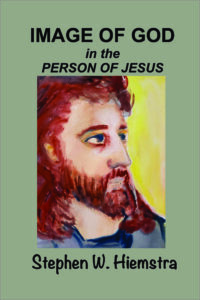The Template

And as Moses lifted up the serpent in the wilderness,
so must the Son of Man be lifted up,
(John 3:14)
By Stephen W. Hiemstra
The Gospel of John alludes five times (John 3:14, 8:28, 12:32,34) to an obscure event that took place during Israel’s desert wandering that is also referenced during the ascension account in Acts 1:9:
“And the people spoke against God and against Moses, Why have you brought us up out of Egypt to die in the wilderness? For there is no food and no water, and we loathe this worthless food. Then the LORD sent fiery serpents among the people, and they bit the people, so that many people of Israel died. And the people came to Moses and said, We have sinned, for we have spoken against the LORD and against you. Pray to the LORD, that he take away the serpents from us. So Moses prayed for the people. And the LORD said to Moses, Make a fiery serpent and set it on a pole, and everyone who is bitten, when he sees it, shall live.” (Num 21:5-8)
The snake-bite analogy is an apt analogy to the postmodern experience because we all live under penalty of death and our time on this earth is limited. What do you do when you find yourself surrounded by snake-bit people who refuse to pray or even to look up?
The Apostle John’s response is to gaze at the image of God in Jesus Christ, recognizing that others may not accept the advice and will willingly forgo salvation. While today many refuse the Gospel, this has not always been the case. Hudson Taylor (1987, 126-127), one of the first missionaries in mainland China, recounted a conversation with a Chinese man in 1857:
“A few nights after his conversion he asked how long this Gospel had been known in England. He was told that we had known it for some hundreds of years. ‘What!’ said he, amazed. ‘Is it possible that for hundreds of years you have had the knowledge of these glad tidings in your possession, and have only now come to preach it to us? My father sought after the truth for more than twenty years, and died without finding it. Oh, why did you not come sooner?’”
Today, more than one hundred and sixty years after Taylor’s mission to China, there are more Christians in China than in all the Western countries that sent such missionaries. This observation is true both because of the huge Chinese population, but also because faith has declined in Western countries in the postmodern period.
The Transcendence Challenge
Postmodern people live in a materialist world, where the only things thought to exist are those that we can touch, taste, smell, hear, or see. Because God lies outside the physical universe, he is defined by the materialist not to exist. The materialist worldview works like an invisible dog fence to restrict our imagination. Postmodern people are transcendence-challenged making it hard to believe that Jesus is divine and easy to believe that he was just an exceptional person.
The rub arises because the New Testament focused more on Christ’s divinity than on his humanity.
The idea that Jesus died on the cross to redeem us from sin is well-attested in the New Testament (e.g. Matt 1:21; 1 Thess 1:9-10; 1 Cor 15:3)—a doctrine that is often referred to as the atonement. The Apostle Paul explained the atonement as a reversal of Adam’s original sin. Adam was sinless until he disobeyed God in the Garden of Eden; Jesus was sinless, but obeyed God even to the point of death on a cross. The resurrection credentialed Jesus as divine, making his sacrifice sufficient to reverse the curse of death brought about by the first Adam’s sin. Only God himself can forgive sins because it requires reversal of a divine curse (e.g. Mark 2:7).
Paul’s Key Role
The Apostle Paul lived and wrote his letters decades before the Gospels, and he focused on the divinity of Christ, because he only knew the Risen Christ. Paul’s explanation of the mechanics of salvation may, however, have motivated interest in recording aspects of Jesus’ life and ministry:
“That I may know him and the power of his resurrection, and may share his sufferings, becoming like him in his death, that by any means possible I may attain the resurrection from the dead.” (Phil 3:10-11)
Paul’s participationary theology pointed to the need to record Jesus’ life story, which was recorded after Paul’s death in the Gospels. In other words, the image of God in the person of Jesus was needed if believers were to live into the salvation template that Paul articulated.
Thus, a record of the resurrection was needed to credential Jesus’ divinity and reverse the curse of death, but a record of Jesus’ life was needed to assure salvation. Given this template, Paul could write:
“If you confess with your mouth that Jesus is Lord and believe in your heart that God raised him from the dead, you will be saved.” (Rom 10:9)
Elsewhere Jesus said: “What comes out of the mouth proceeds from the heart.” (Matt 15:18) Because in the Hebrew worldview heart and mind are interdependent, Paul’s statement is a Hebrew doublet, repeating the same idea in different words. Confessing Jesus as Lord is therefore only meaningful when words and actions are in concert (Jam 1:22-24).
References
Taylor, J. Hudson. 1987. Autobiography of a Man Who Brought the Gospel to China (1832-1905). Minneapolis: Bethany House Publishers.
The Template
Also see:
The Face of God in the Parables
The Who Question
Preface to a Life in Tension
Other ways to engage online:
Author site: http://www.StephenWHiemstra.net
Publisher site: http://www.T2Pneuma.com
Newsletter at: https://bit.ly/Staycation_24, Signup
The post The Template appeared first on T2Pneuma.net.



